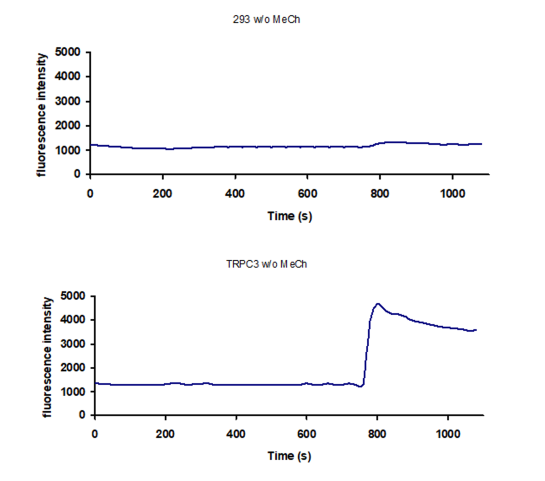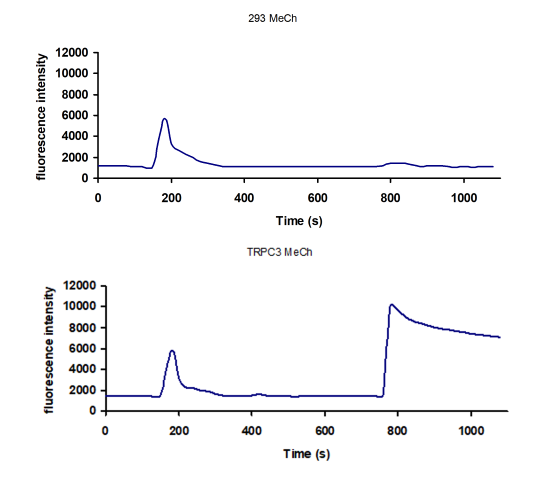TRPC3-HEK293 Recombinant Cell Line
Catalog #
90130
$9,400
*
●
●
Purchase
Description
Stable, recombinant HEK293 cell line expressing human TRPC3 (transient receptor potential cation channel, subfamily C, member 3, accession number NM_003305).
Purchase of this cell line is for research purposes only; commercial use requires a separate license. View the full terms and conditions.
●
Synonyms
TRPC3, Transient Receptor Potential Cation Channel, Subfamily C, Member 3
●
Product Data Gallery
Product Info
Storage and Usage
Citations
Host Cell Line
HEK293 cells
Species
Human
Supplied As
Each vial contains ~1 X 106 cells in 1 ml of 10% DMSO.
Biological Activity
N-terminal FLAG tagged human TRPC3 channel has been stably expressed in HEK293 cell line and its expression was confirmed by Western blotting. The function of TRPC3 was characterized by calcium assay. TRPC3 produces a constitutive Ca2+ entry in HEK293 cells. Addition of methacholine, an activator of phospholipase C-linked muscarinic receptors, significantly activates TRPC3.
Genbank #
NM_003305
UniProt #
Q13507
Mycoplasma Testing
The cell line has been screened using the PCR-based VenorGeM Mycoplasma Detection kit (Sigma Aldrich) to confirm the absence of Mycoplasma species.
Background
TRPC3 channel belongs to the transient receptor potential channel (TRP) superfamily which is divided into seven main subfamilies. TRP channels share a similar architecture of six-transmembrane domains and function as tetramers. Most channels are permeable to calcium and monovalent cations (Vassort et al., 2009). Specifically, TRPC3 channel belongs to a canonical TRP (TRPC) subfamily that is involved in calcium entry. TRPC3 is activated through phospholipase C-linked receptors. When expressed in HEK293 cells, TRPC3 behaves as a receptor activated channel with constitutive activity that cannot be further increased by store depletion (Trebak et al., 2002).
References
1. Albert A.P., Saleh S.N., and Large W.A. (2009). Current Medicinal Chemistry 16: 1158-1165.
2. Lievremont J., et al. (2004). Am J Physiol Cell Physiol 287: C1709-C1716.
3. Trebak M., et al. (2002). J. Biol. Chem. 277: 21617-21623.
4. Vassort G. and Alvarez J. (2009). Can. J. Physiol. Pharmacol. 87: 100-107.



